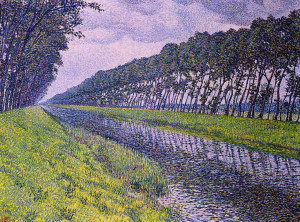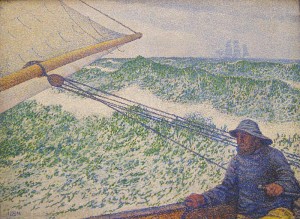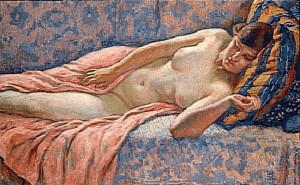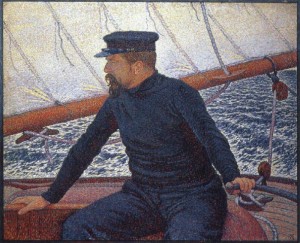Born on November 23 of 1862, Theo Van Rysselberghe was born in Ghent, Belgium to a French-speaking bourgeois family. At 17 years old, Rysselberghe studied in Brussels at the Academie Royale des Beaux-Arts, and at the young age of 18, participated in a showing of two of his portraits at the Salon of Ghent. In 1880, still just 18 years old, Rysselberghe takes his first step toward impressionistic art with his second painting, Child in an Open Spot of the Forest. The talented artist experienced his first exhibit of his work in 1881 at the Salon in Brussels.
Rysselberghe was one of the founders of two major associations of Belgian artists at the turn of the century, the Free Aesthetics and the Twenty (Les XX). Many have the opinion that Rysselberghe’s greatest contribution to the neo-impressionism style was a serious of paintings he created depicting both indoor and outdoor settings; some of these included his 1890 creation Madame Charles Maus, and another in that same year, Family in the Orchard. Family in the Orchard is an oil on canvas genre painting, now in the Rijksmuseum Kroller-Muller, Otterlo, Netherlands.
Rather than landscapes which were favored by the majority of post-impressionists, Rysselberghe preferred to paint portraits, shifting eventually from the pointillist brushwork he enjoyed to a style of color application which was more integrated. Much of his artwork demonstrates his use of “electric” color combinations which resulted in an effective that was pulsating and alive.
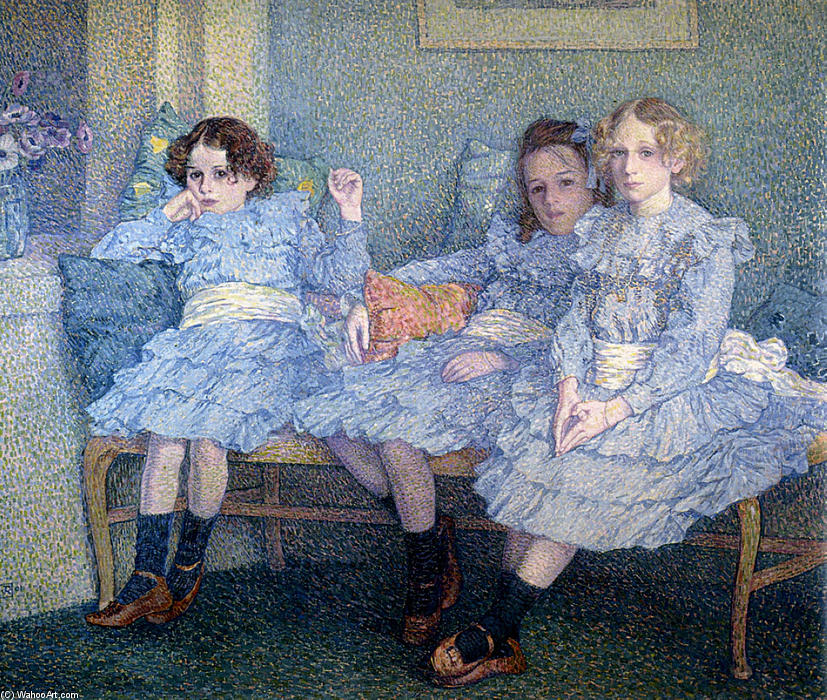
“drei kinder an blau”
By the time he was 25 years old, Rysselberghe had made three trips to Morocco, traveling with his friend Frantz Charlet on the first two of those excursions. After traveling extensively throughout Morocco and Spain on his first trip, the portraits Rysselberghe was inspired to do include Spanish Woman (1881) and Sevillan Woman (1882).
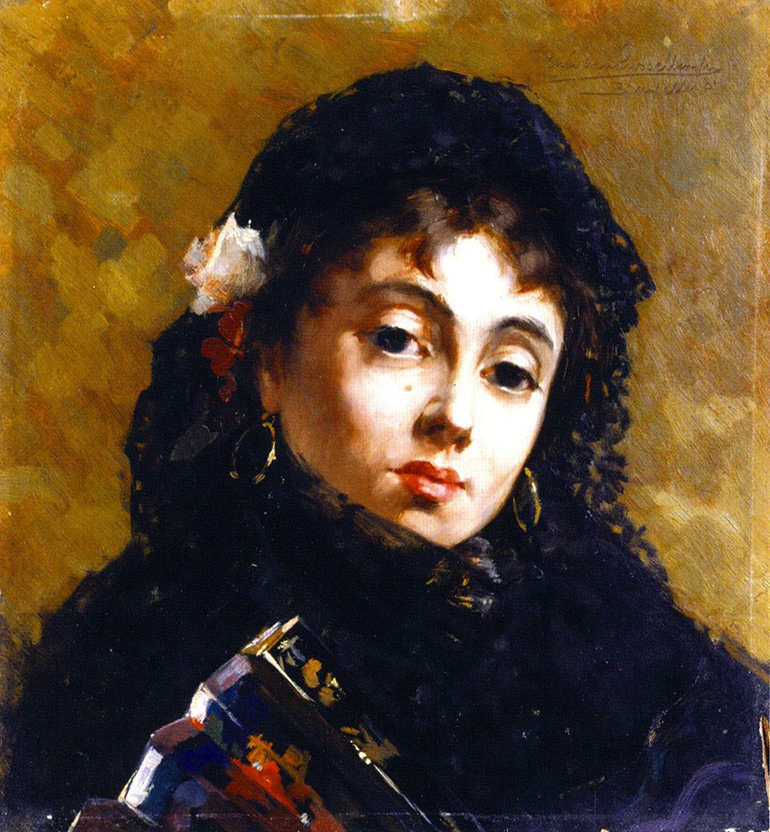
Toward the end of the same year he traveled to Morocco, Rysselberghe went to Tanger where he would remain for four months, crafting picturesque street scenes which include Arabian Boy, Arabian Street Cobbler, and Resting Guard. Once back in Belgium, the Cercle Artistique et Litteraire in Ghent is where Rysselberghe displayed the artistic results of his travels in approximately 30 works; the showing was a huge success.
Married with one daughter, Rysselberghe eventually moved to paintings which were prominently female nudes for the last 21 years of his life. Rysselberghe died on December 14, 1926 in Saint-Clair, Var, France and was buried next to painter and close friend Henri-Edmond Cross in the cemetery of Lavandou.


